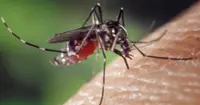Local councils in Selangor have started fogging in dengue cluster neighbourhoods to kill Aedes mosquitoes.
THE Selangor government wants local authorities to ensure residents maintain cleanliness within their premises.
This includes spending 10 minutes a week to destroy potential mosquito breeding sites.
Already a subscriber? Log in
Save 30% OFF The Star Digital Access
Cancel anytime. Ad-free. Unlimited access with perks.





